I have Elon Musk’s Neuralink brain chip implanted in my skull. I can now control computers with my mind
The first patient to receive Elon Musk’s Neuralink “brain chip” implant wants the world to know how “amazing” and “rewarding” his clinical trial of the technology has been.
Just four months ago, 30-year-old Noland Arbaugh went under the knife for an experimental operation that allowed him to control computers with his mind.
“I’m very excited to continue,” Arbaugh, who has been paralyzed from the fourth vertebra of his neck down since college, said of his role in the Neuralink human trial.
But while the tech company’s brain-computer interface has allowed him to race his stepfather in Nintendo’s Mario Kart, navigate a computer cursor and more – all using just his thoughts – there are still technical hurdles that hinder the mechanics of the game’s operation. hinder brain chip.
A report on Arbaugh’s Neuralink trial states that about 85 percent of the chip’s tendril-like connections to his brain have become loose, forcing Neuralink staff to retool the system on the software side as the FDA shuts down trials of approves a second patient.
The first patient to receive Elon Musk’s Neuralink brain chip implant wants the world to know how “amazing” and “rewarding” his clinical trial of the technology has been. “I’m very excited to continue,” said 30-year-old Noland Arbaugh (above) about his role in the Neuralink human trial
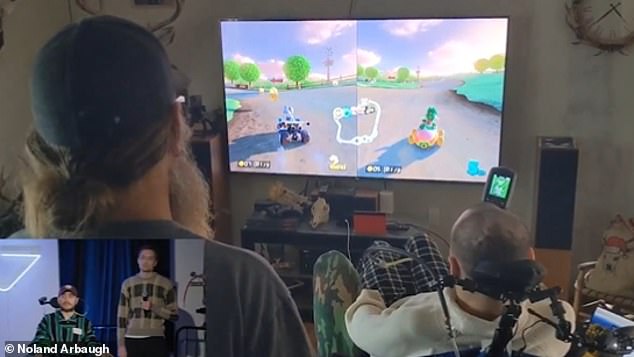
But while the tech company’s brain-computer interface has allowed Arbaugh to race his stepfather in Nintendo’s Mario Kart (as he plays above), navigate a computer cursor and more — all using just his thoughts — there are still technical hurdles that plague the functioning of the brain chip.
According to Arbaugh, who told his story to the New York TimesOver time, the natural movements of his brain, floating in the ‘cerebrospinal fluid’ that protects it from injury, have loosened these electrode-like connections.
However, Neuralink sources told the newspaper Wall Street Journal the malfunction may have resulted from air becoming trapped in his skull during surgery: a condition known as pneumocephalus, which can cause seizures, brain abscess and death if left untreated.
The report claimed that the condition caused the wires to loosen, which almost led to the implant being removed.
But Musk’s company announced this month that it plans to implant wires that penetrate deeper into the brain in its second human patient, plans that have been approved by the US Food and Drug Administration (FDA).
Neuralink’s brain-computer interface consists of a computer chip attached to small flexible wires that are stitched into the brain via a ‘sewing machine-like’ robot.
Aided by medical professionals and company staff, the robot removes a small piece of the skull, connects these wire-like electrodes to certain parts of the brain and sutures the hole closed – with the only visible remnant being a scar from the incision.
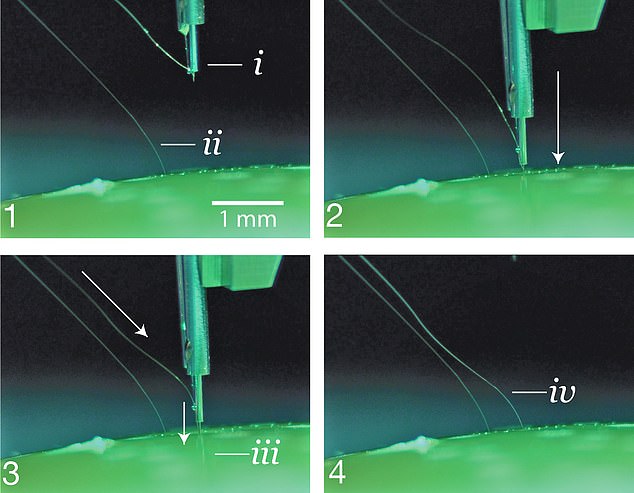
Neuralink’s brain-computer interface consists of a computer chip attached to small flexible wires stitched into the brain. A ‘sewing robot’ (above) removes a small piece of the skull, connects the thread-like electrodes to certain parts of the brain and sutures the hole closed
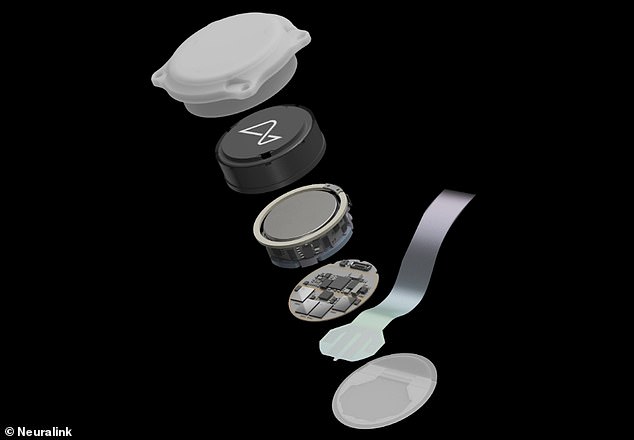
Neuralink’s human testing of the brain-computer interface hopes to evaluate the implant’s safety
Musk has said that this procedure takes just 30 minutes, requires no general anesthesia, and patients can return home the same day.
But neuroscientist Dr. Lee Miller of Northwestern University noted that the brain’s immune defenses have also posed challenges for brain chip implants like Neuralink.
Researchers, Dr. Miller said, have seen scar tissue develop in the brain around sensor implants, which, among other things, hinders the chip’s connectivity.
Brains have even rejected entire units connected to the brain by a grid of tiny needles, according to rehabilitation medicine researcher Dr. Miller.
Although Neuralink’s software fixes required Arbaugh to learn new methods of clicking and navigating a computer screen with his cursor, the Arizona native said it was still an improvement over life before Neuralink.
In the years since he became paralyzed in a swimming accident, Arbaugh had tried a variety of devices that ultimately failed to provide a long-term solution to his mobility needs.
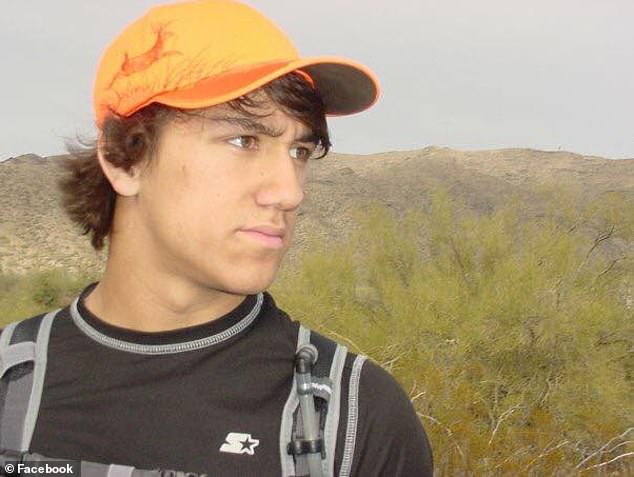
Arbaugh, while watching a swimming accident that left him paralyzed from the neck down
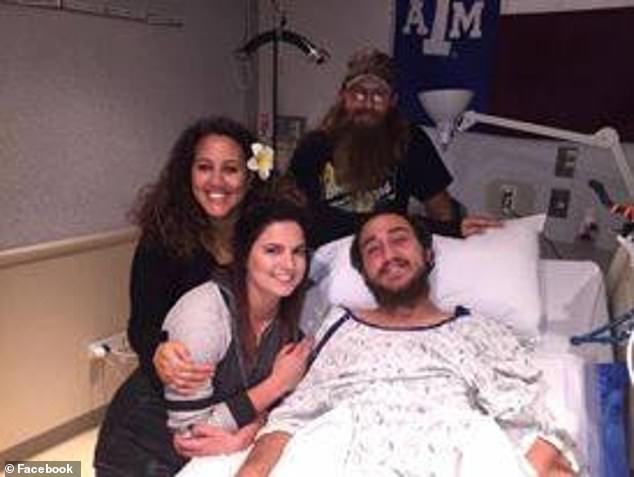
Arbaugh with loved ones
Before Neuralink, Apple’s voice assistant Siri on Arbaugh’s iPad had proven to be the most reliable method for composing text-based written messages, calling his friends and completing other life tasks.
After the Neuralink implant was installed last January and after an intensive training period with company staff, Arbaugh managed to break a 2017 world record for speed and precision while controlling a computer cursor with his mind.
“I was like, as soon as you guys take these restrictions off of me, I’m just going to fly,” Arbaugh recalled. “It was really cool.”
While he said the loss of 85 percent of this interconnectivity with the brain implant has been difficult and disappointing, he emphasized that he is proud to play a role in improving this breakthrough. medical technologies.
“I just want to take everyone on this journey,” Arbaugh said, adding that he hopes Neuralink and similar devices will one day help others regain their lost speech, vision or movement.
A neurophysiologist, Dr. Cristin Welle — who helped start the FDA program that reviews medical devices such as implants for approval — said Neuralink’s plans to install deeper connections between their chips and the human brain face other biological hurdles could encounter.
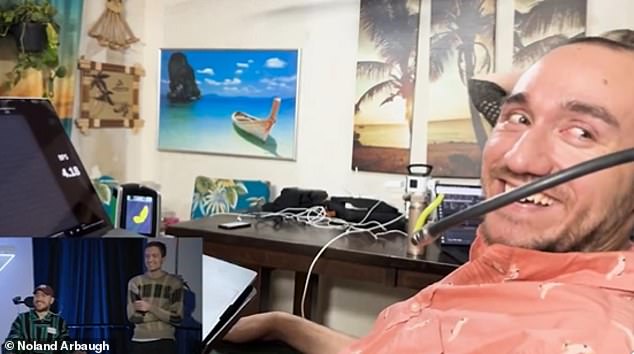
After the Neuralink implant was installed last January and after an intensive training period with company staff, Arbaugh managed to break a 2017 world record for speed and precision when controlling a computer cursor with his mind
Dr. Welle, who works at the University of Colorado said deeper tendrils can still slip out of place or even rub against the surface of the brain, where they could potentially increase the amount of scar tissue formed – increasing the signal loss between the brain and the chip, among other possible health problems.
Neuralink’s soft, connecting wire design, she suggested, may have to go back to the drawing board.
“A fully flexible device may not be a long-term solution,” Dr. Welle said. “It’s hard to know.”
Regardless, Neuralink’s very first human patient still has high hopes for the future of the implant. He says he looks forward to broader, more sci-fi applications of brain-computer interfaces after the technology helps those most in need.
“Then it can be about empowering people to expand their capabilities,” Arbaugh said, “as long as we don’t give up our humanity along the way.”
